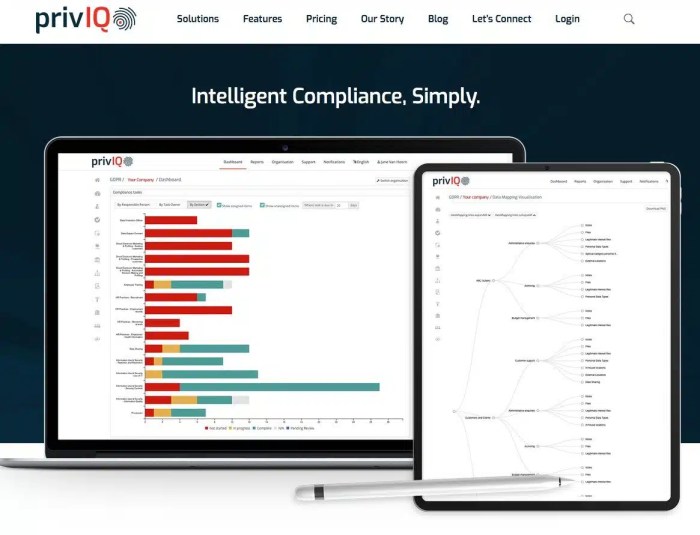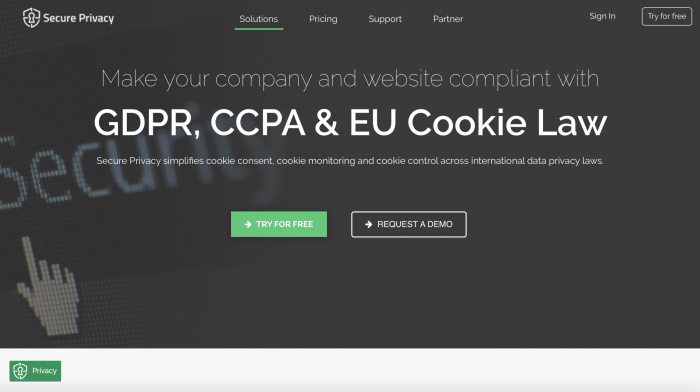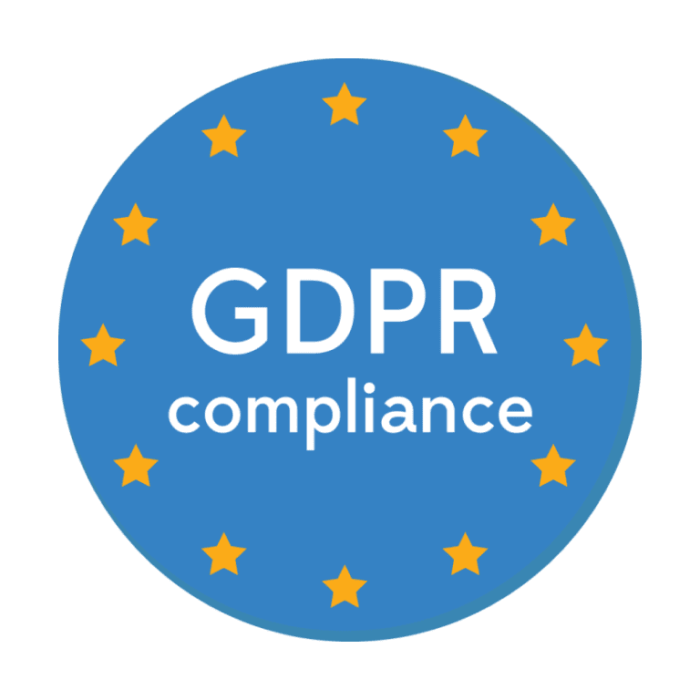GDPR compliant data software is transforming the landscape of data privacy and security. With the increasing importance of data protection regulations like the GDPR, businesses are compelled to adopt solutions that not only meet legal requirements but also foster consumer trust. Understanding the principles of GDPR and how software can uphold these standards is critical for organizations striving to maintain compliance and enhance their data management practices.
This discussion will explore the fundamental features of GDPR compliant data software, such as data encryption, audit trails, and the significance of vendor transparency. Moreover, we will examine the challenges businesses face in implementing these compliant solutions and offer insights into best practices for maintaining ongoing compliance in an evolving regulatory environment.
Overview of GDPR and Its Importance
The General Data Protection Regulation (GDPR) represents a significant leap forward in data protection legislation, establishing a framework that prioritizes individual privacy rights and data management practices. In an age where data breaches and misuse of personal information are rampant, GDPR sets the standard for how organizations collect, process, and store personal data, making it imperative for businesses to comply with these regulations.
The key principles of GDPR, which include data minimization, purpose limitation, and accountability, are essential for ensuring that organizations handle data responsibly. By adhering to these principles, companies can build trust with consumers, who are increasingly aware of their data rights and expect transparency from businesses. Additionally, non-compliance can lead to severe penalties, further emphasizing the necessity of GDPR in today’s digital landscape.
Significance of GDPR in Today’s Data Management Landscape
GDPR plays a pivotal role in shaping how organizations approach data management. The regulation provides a clear set of guidelines that help businesses navigate the complex landscape of data privacy. This clarity is crucial as it encourages companies to establish robust data protection measures that not only comply with the law but also enhance customer trust.
Key Principles of GDPR
The core principles of GDPR include:
- Lawfulness, fairness, and transparency: Data must be processed legally and transparently.
- Purpose limitation: Data should only be collected for specific, legitimate purposes.
- Data minimization: Only data that is necessary for the intended purpose should be collected.
- Accuracy: Organizations must ensure personal data is accurate and kept up to date.
- Storage limitation: Data should be retained only as long as necessary for the purposes for which it was collected.
- Integrity and confidentiality: Adequate security measures must be in place to protect data.
Impact of GDPR on Businesses and Consumer Trust
GDPR has a profound impact on how businesses operate, compelling them to reassess their data handling practices. Compliance with GDPR not only helps avoid hefty fines but also strengthens consumer trust. A transparent approach to data management fosters loyalty among customers who feel their privacy is respected and protected.
Features of GDPR Compliant Data Software
Choosing the right data software that complies with GDPR is crucial for organizations aiming to protect personal data effectively. There are several essential features that such software should possess.
Critical Features for GDPR Compliance
GDPR compliant software must incorporate various functionalities to ensure adherence to the regulation. Key features include:
- Data encryption: Protects sensitive information from unauthorized access.
- Pseudonymization: Helps in reducing the risk associated with data processing by separating personal data from identifiers.
- Audit trails: Enables tracking of data access and modifications, providing a clear record of data handling practices.
- Reporting capabilities: Allows for the generation of reports necessary for compliance audits and assessments.
The Role of Data Encryption and Pseudonymization
Data encryption and pseudonymization are significant components of GDPR compliance. Encryption ensures that even if data is intercepted, it remains unintelligible without the appropriate decryption key. Pseudonymization, on the other hand, reduces the direct association between data and individuals, minimizing privacy risks.
Examples of Audit Trails and Reporting Capabilities
Software that maintains audit trails and robust reporting functionalities allows organizations to monitor data access and changes effectively. For instance, a GDPR compliant software might generate logs that detail who accessed specific data, when, and what actions were taken. This capability is vital for demonstrating compliance during audits.
Choosing the Right GDPR Compliant Data Software

Selecting the appropriate GDPR compliant data software is critical for effective data management. Organizations should consider several key factors in their decision-making process.
Checklist for Selecting GDPR Compliant Software
When evaluating potential software solutions, organizations should utilize a checklist that includes:
- Verification of GDPR compliance certifications.
- Assessment of security features such as encryption and access controls.
- Evaluation of user consent management capabilities.
- Analysis of vendor transparency regarding data handling practices.
Importance of Vendor Transparency

Vendor transparency is essential for ensuring that organizations understand how their data will be handled. A transparent vendor will provide clear information about data storage, processing, and sharing practices, reducing the risk of non-compliance.
Case Studies of Successful Implementations
Numerous businesses have successfully implemented GDPR compliant software, leading to improved data management and enhanced consumer trust. For example, a retail company that adopted a compliant CRM system reported a 30% increase in customer satisfaction due to improved data management practices and transparent communication regarding data usage.
Challenges and Solutions in Implementing GDPR Compliance: GDPR Compliant Data Software
While implementing GDPR compliance poses challenges, organizations can adopt strategies to overcome these obstacles effectively.
Common Challenges in Adoption
Organizations often face various challenges when adopting GDPR compliant software, including:
- Resistance to change from employees who may be accustomed to previous processes.
- Insufficient training leading to lack of understanding of compliance requirements.
- Integration difficulties with existing systems and processes.
Strategies to Overcome Resistance
To mitigate resistance, organizations should engage employees in the compliance process, providing necessary training and resources. Highlighting the benefits of compliance, such as enhanced security and customer trust, can also facilitate a smoother transition.
Importance of Ongoing Training and Awareness
Ongoing training and awareness campaigns are vital for maintaining compliance. Regular refreshers on GDPR principles and data management best practices help ensure that all employees understand their roles in protecting personal data.
Evaluating Data Software for GDPR Compliance
To effectively assess data software for GDPR compliance, organizations should develop a comprehensive evaluation framework.
Framework for Evaluation
An effective evaluation framework for GDPR compliant data software should include:
- Assessment of compliance with GDPR principles.
- Evaluation of security measures and incident response capabilities.
- Review of vendor practices regarding data handling and storage.
Criteria for Assessing Software Vendors, GDPR compliant data software
When assessing software vendors, organizations should consider factors such as:
- Track record of compliance with data protection regulations.
- Availability of support services and resources for compliance.
- Feedback and reviews from current users regarding compliance features.
Comparison of Popular GDPR Compliant Data Software Options
Organizations can benefit from a comparative analysis of popular GDPR compliant data software, allowing for informed decision-making. A comparison table featuring key features, pricing, and user feedback can serve as a valuable resource in this evaluation process.
Future Trends in GDPR Compliant Data Software
As regulations and technological advancements continue to evolve, the landscape of GDPR compliant data software is expected to change significantly.
Anticipated Changes in GDPR Regulations
Future changes in GDPR regulations may focus on enhancing individual rights and addressing emerging technologies. For instance, regulations may evolve to address the growing use of artificial intelligence and machine learning in data processing.
Emerging Technologies Enhancing Compliance
Emerging technologies such as blockchain and advanced encryption methods hold the potential to enhance GDPR compliance. Blockchain can provide transparent and immutable records of data transactions, while advanced encryption methods can offer additional layers of security.
Role of Artificial Intelligence in Data Protection
Artificial intelligence is poised to play a crucial role in ensuring data protection and compliance. AI can automate data management processes, identify potential security threats, and help organizations maintain compliance through continuous monitoring.
Best Practices for Maintaining GDPR Compliance with Data Software
To ensure ongoing compliance with GDPR, organizations should adopt best practices that facilitate effective data management.
Continuous Monitoring and Auditing

Regular monitoring and auditing of data software are essential for maintaining compliance. Organizations should establish a routine for reviewing data handling practices, identifying potential vulnerabilities, and implementing necessary improvements.
Guide for Regular Updates and Patches
Keeping software up to date is critical for ensuring ongoing compliance. Organizations should implement a schedule for regular updates and patches, addressing any identified security vulnerabilities promptly.
Importance of Documentation and Record-Keeping
Thorough documentation and record-keeping are vital components of GDPR compliance. Organizations should maintain detailed records of data processing activities, consent management, and compliance audits to demonstrate adherence to regulatory requirements.
Last Point
In conclusion, selecting the right GDPR compliant data software is essential for businesses looking to navigate the complexities of data protection. By understanding the principles of GDPR and employing best practices, organizations can not only achieve compliance but also build a reputation for being trustworthy stewards of customer data. As regulations continue to evolve, staying informed and adaptable will be key to ensuring sustained compliance and leveraging the benefits of technology in data management.